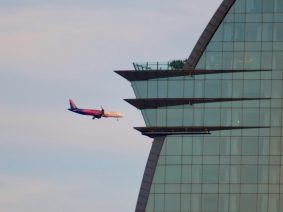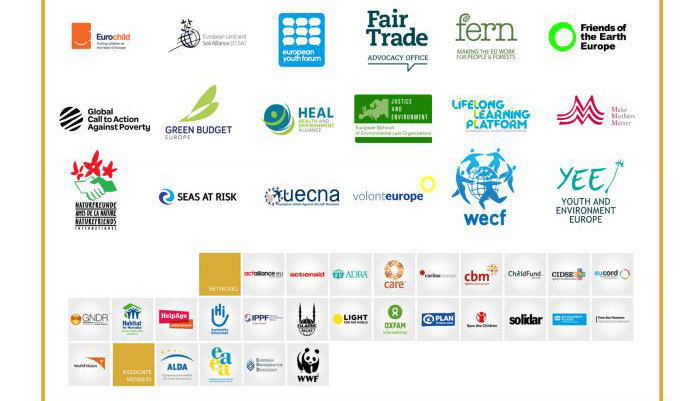
-
Interaction between the modes of transport should be improved
-
Potential to attract around 4.3 million air travellers within Germany for the rail in the medium term
-
Transport sector reduces CO2 emissions
The Federal Association of the German Aviation Industry (BDL) and Deutsche Bahn (DB) are launching a joint action plan to strengthen the networking of modes of transport and to reduce greenhouse gas emissions in the transport sector. In the declaration signed today in Berlin, the two parties announce that they will be taking a series of measures to improve the interfaces between the modes of transport and the mobility offer so that more travellers will choose rail, especially when travelling to hub airports.
The aviation industry and DB see the potential for a good 20 percent of those travelling by plane within Germany to choose rail instead. The partners want to leverage this potential in the following years: With high-performance, attractive offers and ongoing infrastructure expansion, BDL and DB want to attract around 4.3 million passengers to switch to the train. In 2019, the aviation industry recorded around 23 million travellers, 8 million of them on feeder traffic and 15 million on purely domestic trips. As a result, the share of domestic air traffic in CO2 emissions in Germany could be reduced by a sixth.
The action plan focuses on three points:
Growing range of feeder trains for international flightsThe Lufthansa Express Rail service will expand to include further domestic German routes. Wherever passengers accept the offer and increasingly switch to rail, the aviation industry can consequently reduce flight frequencies and also discontinue connections, such as on the Cologne-Frankfurt connection or most recently on the Berlin-Nuremberg route. The fast rail connections are primarily intended to shift feeder flights to large hubs and individual traffic to the airport by rail.
Easier transfers between flight and trainOptimized routing and signage will make it easier for travellers to switch between planes and trains. The change at the airport between the train and the airport security area is to be improved for intermodal customers. Baggage handling should also become easier. Frankfurt / Main Airport is the starting point for this.
Faster train connections between major citiesWith the DB, the federal government is expanding the federal rail routes for the implementation of the Germany cycle in stages. This enables shorter travel times and nationwide coordinated connecting trains. The action plan takes into account high-performance, attractive rail connections, especially between metropolises, and better transfer connections in local transport. In this way, the need for domestic flights on more and more routes can be made superfluous.
Peter Gerber, President of the BDL Air Transport Association: ‘We want to network the modes of transport in such a way that the customer-friendliness of the mobility offer for travellers is further improved. With a growing range of rail services and optimized interfaces, more people will switch to rail. This is an important building block for climate protection in the transport sector.’
Dr. Stefan Schulte, President of the Airport Association ADV: ‘A customer-friendly connection of the airports to the rail network is a prerequisite that more people choose to travel to the airport by rail instead of plane or car. Our joint action plan names specific projects to further optimize networking.’
Ronald Pofalla, DB Board Member for Infrastructure: ‘This action plan is active climate protection! Travellers who have previously used the plane should in future take the environmentally friendly train as a matter of course. There are already numerous fast connections between the metropolises that can keep up with any domestic German plane.’
Berthold Huber, DB Board Member for Passenger Transport: ‘With the timetable change from December, we will be offering more alternatives to short-haul flights with new, super-fast Sprinter connections. In addition, we are connecting the airports even more closely to the railways. We want to work closely with the aviation industry. The recent expansion of our partnership with Lufthansa is groundbreaking in this regard.’
In order to replace feeder flights and to avoid car journeys to the airports, the connection of the large hubs to the rail is a key factor. There are already five airports with long-distance and local transport (Berlin, Düsseldorf, Frankfurt, Cologne / Bonn and Leipzig / Halle) and a further seven airports with local transport (Dresden, Friedrichshafen, Hamburg, Hanover, Lübeck, Munich and Stuttgart.






